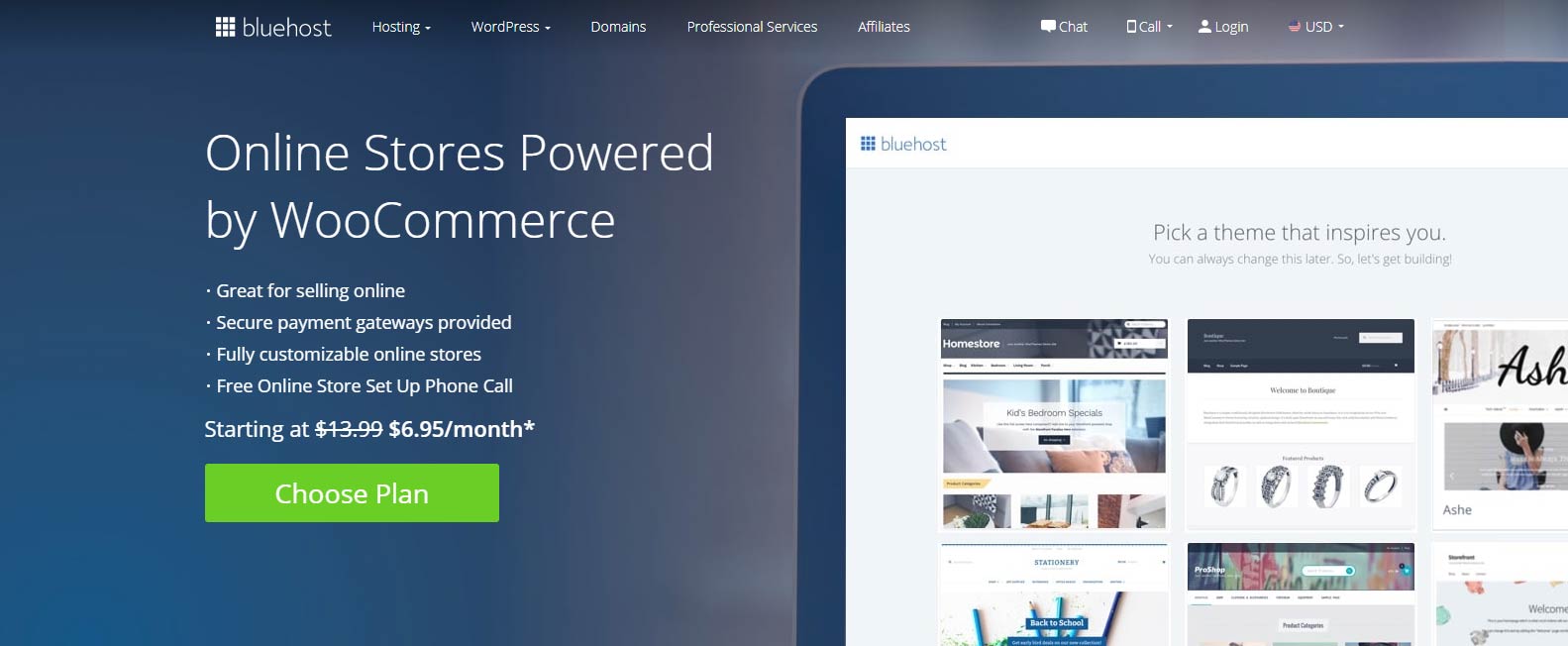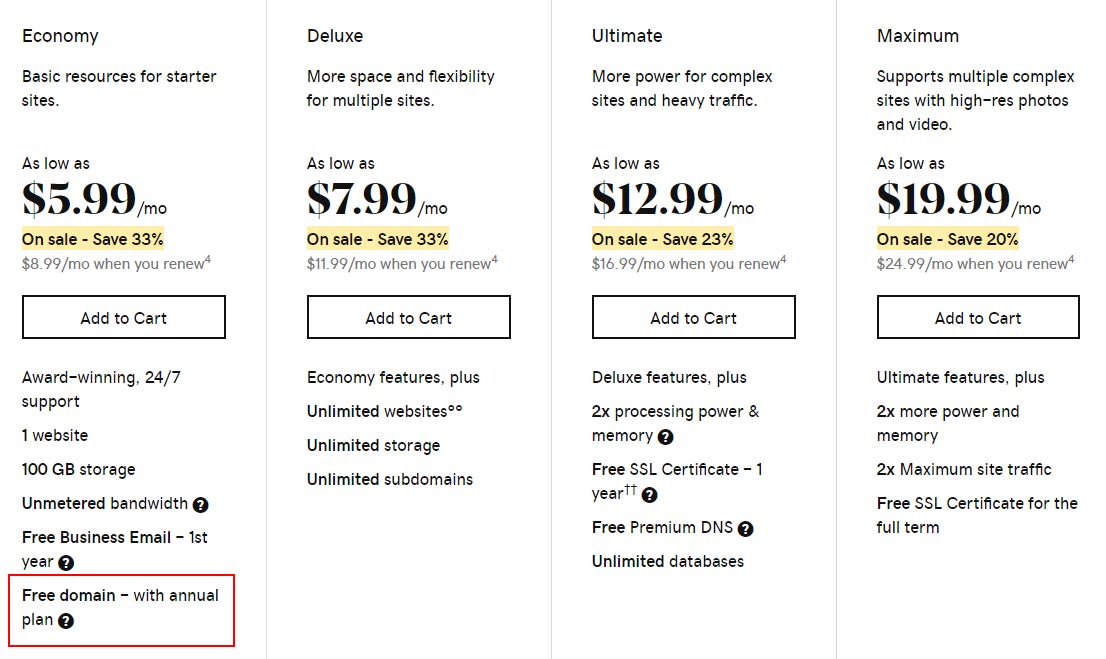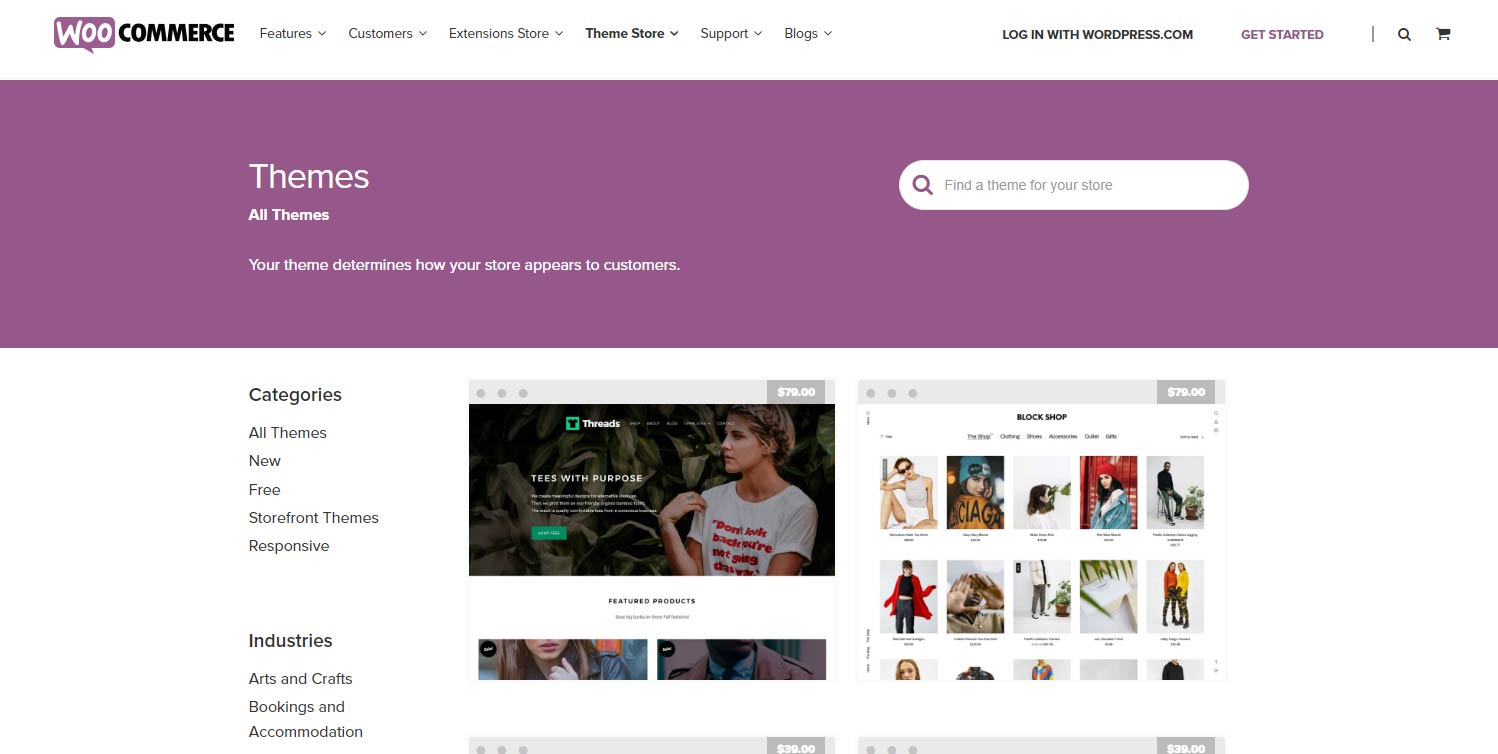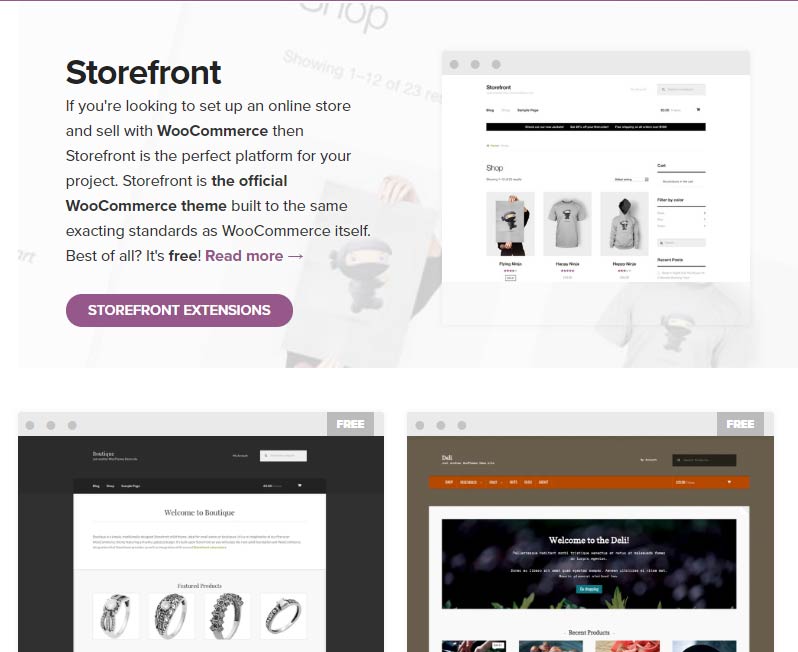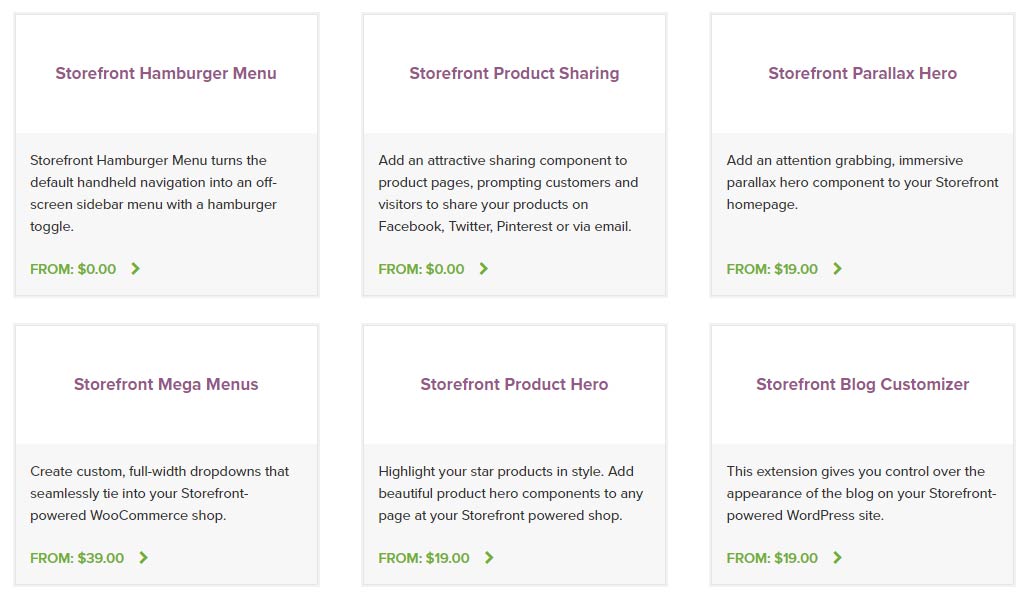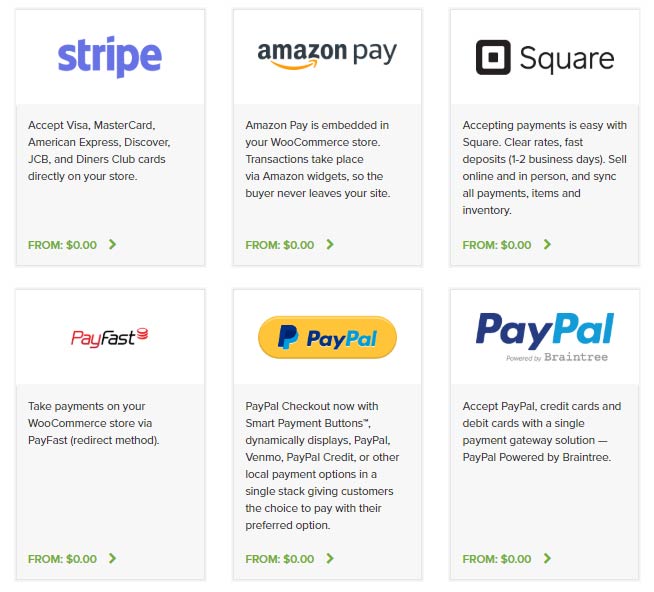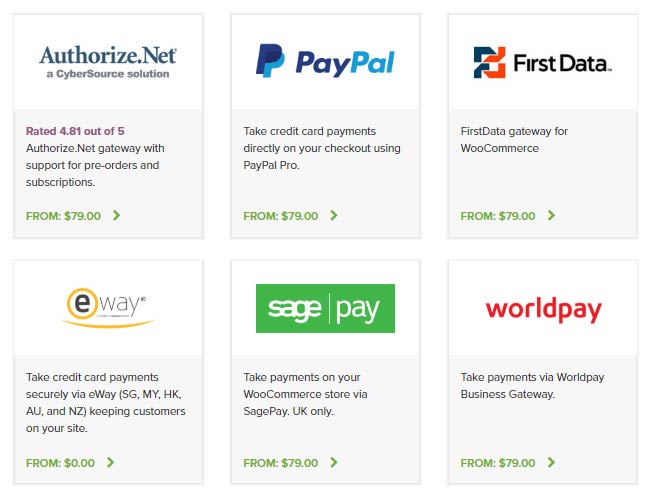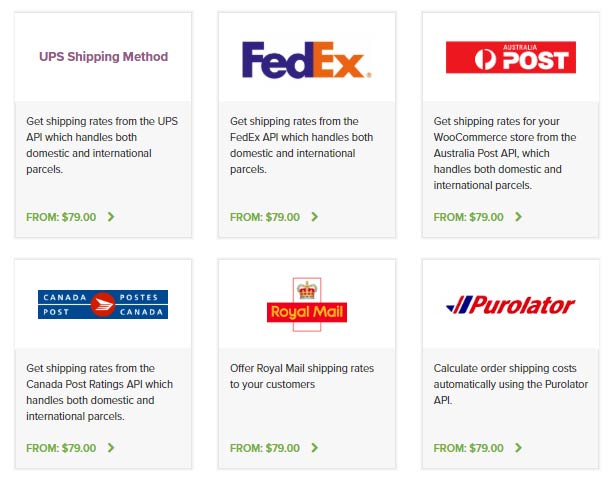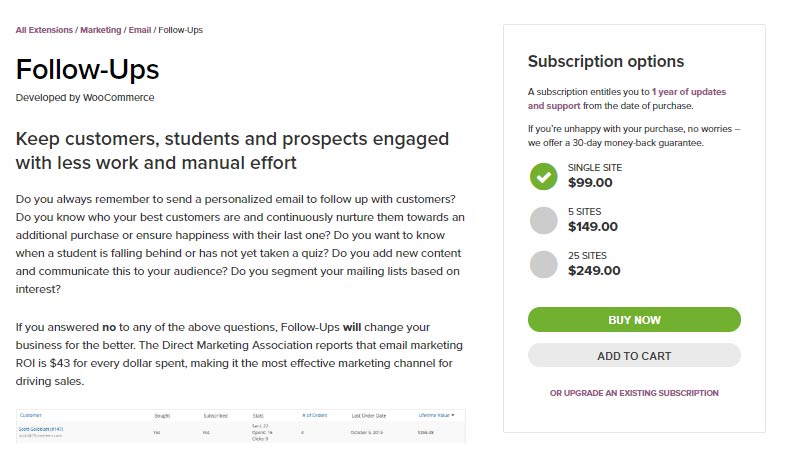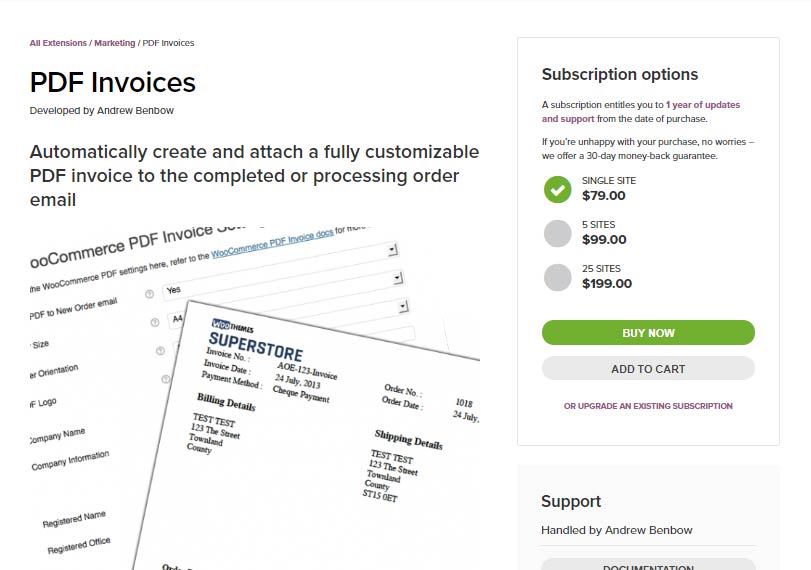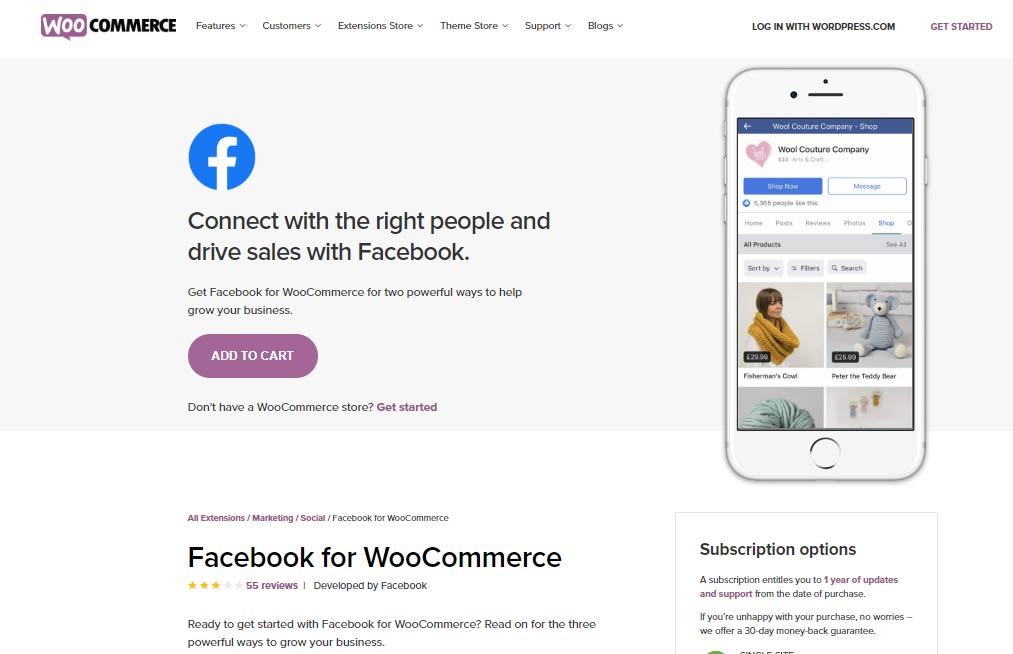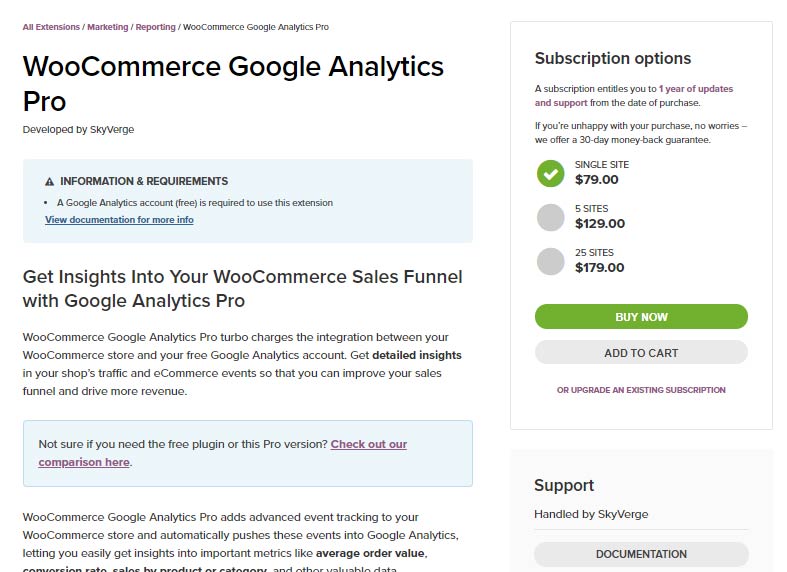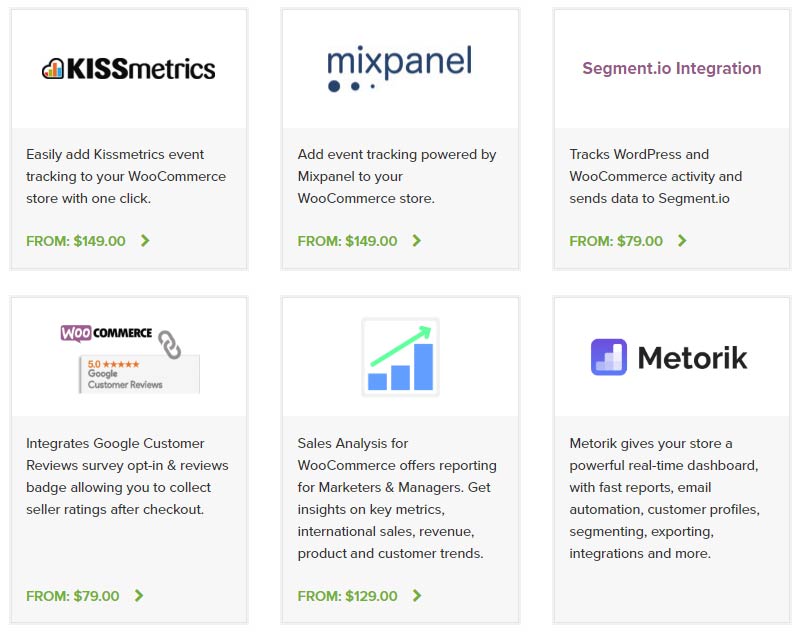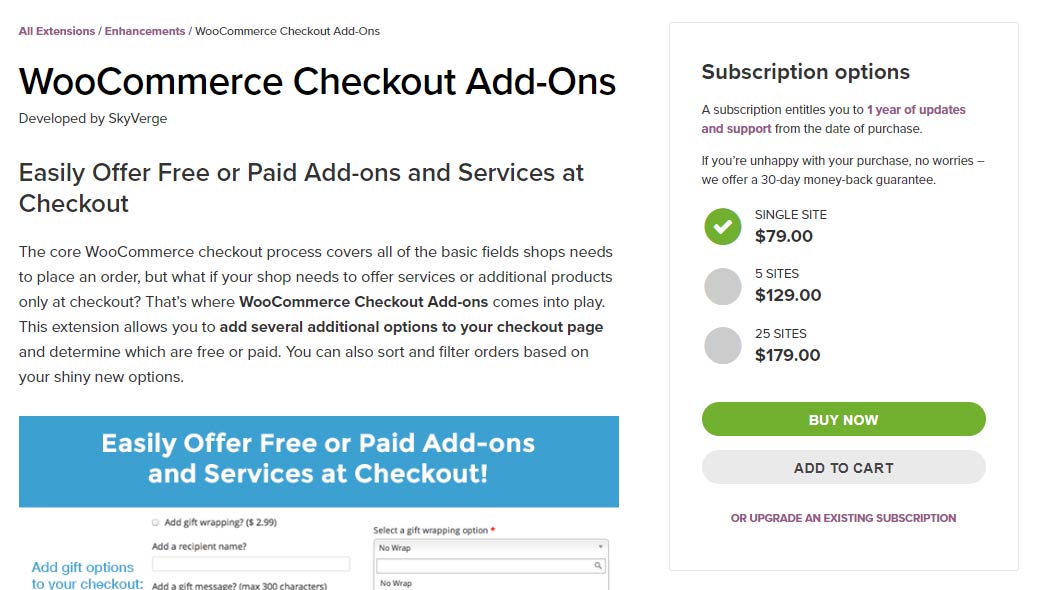If you want to build an online shop on your WordPress site, you’ve probably looked into WooCommerce pricing.
While the ecommerce plug-in’s basic tools are free, you can incur expenses for using additional features. Let’s explore the WooCommerce fees and weigh whether it’s the right tool for your small business.
How Much Does WooCommerce Cost?
Is WooCommerce free? The good news is yes, for the basics.
However, there are other factors to consider.
Although WooCommerce is free, there are associated costs tied to using WordPress, including hosting and domain registration fees. Some extensions can be used for free.
There are also the traditional costs that come from running a website, including:
- Website hosting: Less than $10 per month to about $15, depending on your host
- Themes: Some are free, others cost anywhere from around $20 to $60
- Domain registration: Can run from $10-$20, but can also be free
Operating a basic version of WooCommerce can cost nothing, but if you want features with more sophisticated functions, you’ll have to spend money. When operating a WooCommerce site, extension pricing varies:
- Ecommerce basics: $0-$79
- Marketing: $0-more than $100
- Expanded functionality: $49-$199
Let’s take a closer look at your options and what would work best for your small business’s website.
1. WordPress Hosting
Web hosting makes it possible to launch a website; it stores the files and assets your site needs to run.
There are a number of hosting platforms that work well with WordPress, including HostGator, A2 Hosting, DreamHost and GoDaddy.
There also are WordPress-hosting companies that offer WooCommerce bundles.
One example is SiteGround.
BlueHost offers a similar package.
Hosting prices will vary, depending on the service provider. In general, the more features you require, the higher the cost.
Most web hosting providers will offer multiple types of plans. For example, SiteGround offers web hosting, WordPress hosting and WooCommerce hosting.
Notice that the prices for each plan as well as the features included are the same.
No matter which you choose, it should allow you to install both WordPress and WooCommerce. But if you select any of the plans under WooCommerce, it would come preinstalled with all the tools you’ll need to get up and running.
Note that most hosting companies offer plans at a discounted rate. However, that amount could increase when your plan is renewed.
-
Tip: When you start an ecommerce site, you want to look for a hosting platform that offers SSL certification. It’s an internet protocol that increases security while browsing the web. It’s a must-have for any online store. You see it whenever you encounter uniform resource locators (URLs) that start with HTTPS:// instead of HTTP://, which is becoming less common.
2. Domain Name
You can’t launch a site without a domain name.
There are web hosting plans that include 1 free domain. For example, GoDaddy’s Economy web hosting plan provides this perk.
However, you’ll have to buy a domain if the plan you select does not cover it.
Domain names with common words or phrases can cost more than those that are unique. These expensive domains are referred to as premium domains. According to A2 Hosting, reasons include the following:
- Length — Shorter domain names are easier to remember, so they’re worth more.
- Branding — If a domain name is suited for easy branding, the price increases.
- Keywords — If a domain name includes sought-after keywords, that also affects its price.
The domain extension (.com, .net, .biz, etc.) you use will also affect pricing.
According to NameCheap, registries (or companies that sell domain names at wholesale prices) set the price for registrars (companies that sell domains at retail).
The nonprofit organization Internet Corporation for Assigned Names and Numbers (ICANN) regulates the prices of older domain extensions (.com, .net. and .biz), but new domain extensions such as .club, .shop and .news are unregulated at this time. That’s why wholesalers can mark up the prices. The same can be said for country domain options such as .us for the U.S. or .ca for Canada.
In general, pricing varies from registrar to registrar. For example, GoDaddy sells fastcarheaven.com for $1 for initial registration, while the same domain can be bought through NameCheap for $8.88.
You also need to consider that the domain price invariably goes up when you renew your registration.
3. WordPress Theme
WooCommerce can work with pretty much any WordPress theme. The problem? Not every theme is suited for an online store. That’s why there are developers who sell themes that are built specifically for e-commerce.
WooCommerce offers free and paid themes that work with their platform.
The Storefront theme is designed with online retailers in mind.
Storefront is free; but like the WooCommerce pricing, you’ll have to buy extensions to unlock some of its other features.
If you spend money on a WooCommerce extension, pricing ranges from nearly $20 to almost $60.
You can also use third-party themes, such as those from Theme Forest. There you can find several WooCommerce themes that cost less than $50.
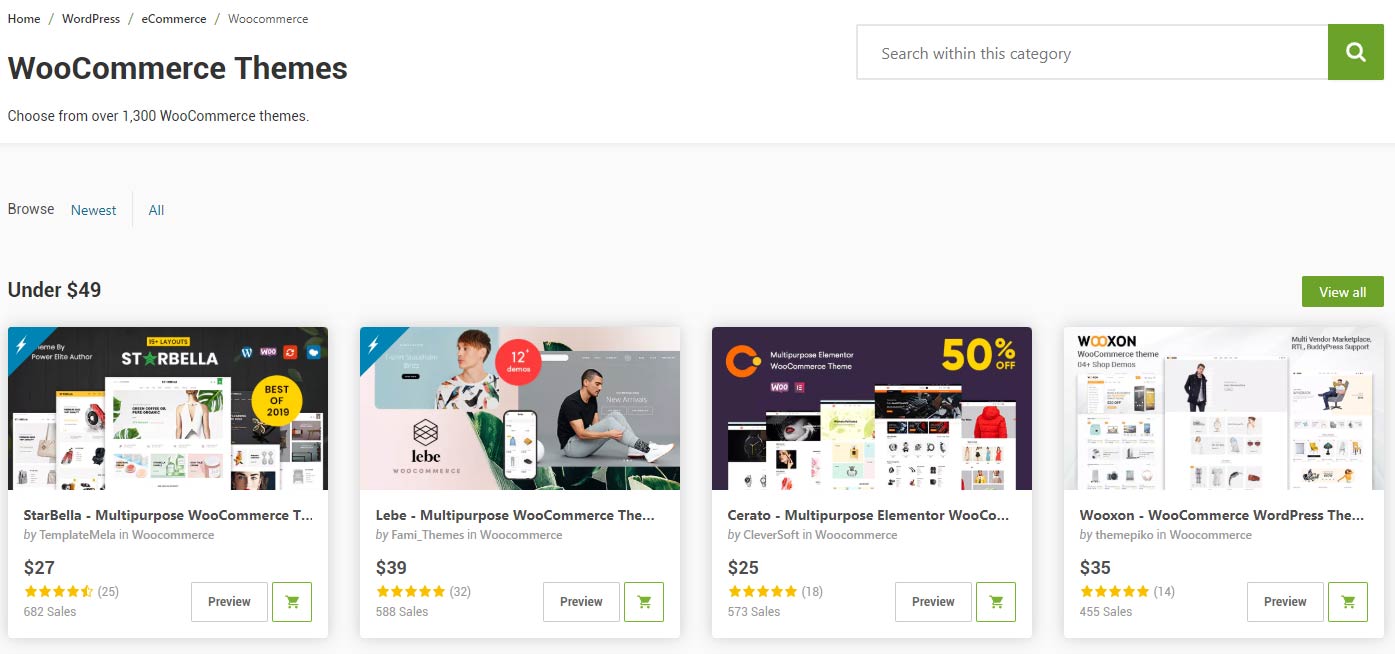
4. WooCommerce: Pricing for Ecommerce Basics
The WooCommerce plug-in doesn’t cost anything to install and has a number of basic features, such as:
- Add a store section to your site with no limit on how many products you can sell
- Add product variations such as size and color
- Track product inventory, set prices and categorize products
- Enable customer reviews
- Track coupon usage
However, it doesn’t process payments, so you’ll have to connect to a provider such as Square, PayPal or Stripe.
While you can install Stripe, Amazon Pay, Square and PayPal on your WooCommerce WordPress site at no cost, you will have to spend $79 for extensions such as PayPal Pro, First Data, Sage Pay or Worldpay.
This is on top of the transaction fees that each provider sets for its users. Square takes 2.6% (plus 10 cents) per transaction. PayPal and Stripe get 2.9% (plus 30 cents) per transaction.
Your free WooCommerce plug-in comes with direct connections to United States Postal Service (USPS) and Canada Post. Using either service will mean spending cash on shipping fees.
If you plan on using another shipping service such as United Parcel Service (UPS) or FedEx, you might need to buy extensions.
Note that buying a shipping method extension for WooCommerce doesn’t include features such as shipment tracking in the pricing; that might require an additional cost.
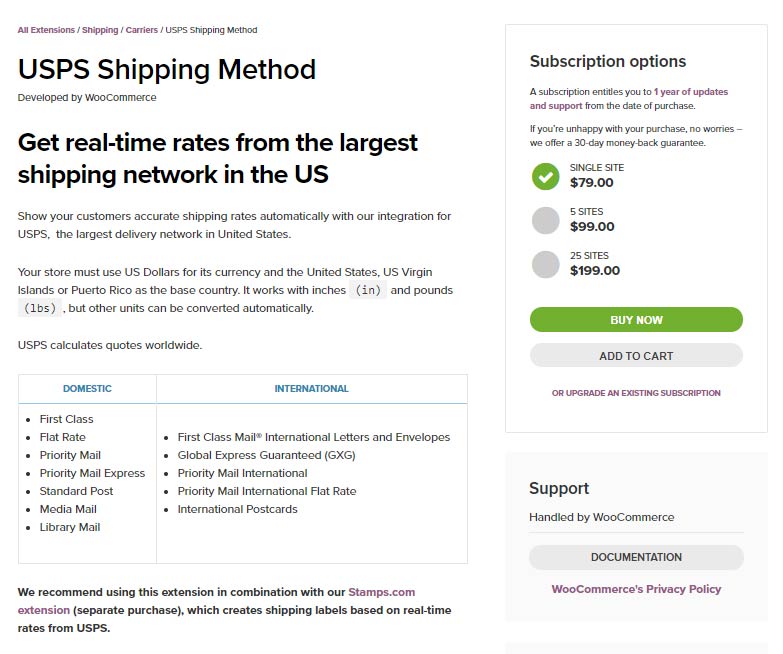
5. WooCommerce Pricing for Marketing Features
WooCommerce comes with extensions for marketing, but determining the final cost will depend on what integrations you need.
Let’s start with email marketing. Services such as MailChimp and Campaign Monitor are free, but other extensions aren’t. The Follow-Ups tool, which automatically contacts customers after they buy your products from your WooCommerce site, costs $99.
A WooCommerce extension for automatically attaching invoices to processed orders costs $79.
WooCommerce also sells social media extensions, though choices are limited to Facebook, Pinterest and Instagram at this time.
WooCommerce’s Facebook extension pricing? Free. It allows you to use the Facebook Ads extension and launch a store on your Facebook page.
The Instagram and Pinterest extensions for WooCommerce cost $79.
The Share Your Purchase extension lets customers share their purchases on their social media accounts. It costs $29 to activate.
To keep track of analytics, WooCommerce provides its users with Google Analytics and other relevant tools.
While Google Analytics integration is free, a Pro version can be purchased for $79.
Other marketing tools such as KISSmetrics and Mixpanel can cost nearly $150.
You’ll also need to manage your site’s search engine optimization (SEO). Yoast is one of the most popular SEO plug-ins around for WordPress.
There’s a version that can be integrated with WooCommerce. It’s called Yoast WooCommerce SEO Plugin and it’s available for $69 per site.
It has a number of features, such as having information on pricing and available stocks show up on social media posts. A link brings Facebook and Pinterest users straight to your store.
Yoast also has features that help search engines find and share your pages when users search for relevant terms.
6. WooCommerce Pricing for Expanded Functionality
Launching a fully functional e-commerce site will mean you have to invest in other crucial features. If you have physical stores on top of an online shop, there are extensions you can install to integrate the physical and digital realms.
You can use WooCommerce Memberships ($199) to offer loyal customers exclusive deals or offer targeted products.
The WooCommerce Checkout Add-Ons ($79) presents customers with relevant products before they finish their transactions.
A similar extension called Product Add-Ons ($49) gives customers a chance to add services such as gift wrapping and special messages to their order.
There are more extensions in the WooCommerce library—for varying costs—that improve your customer experience and promote your products.






